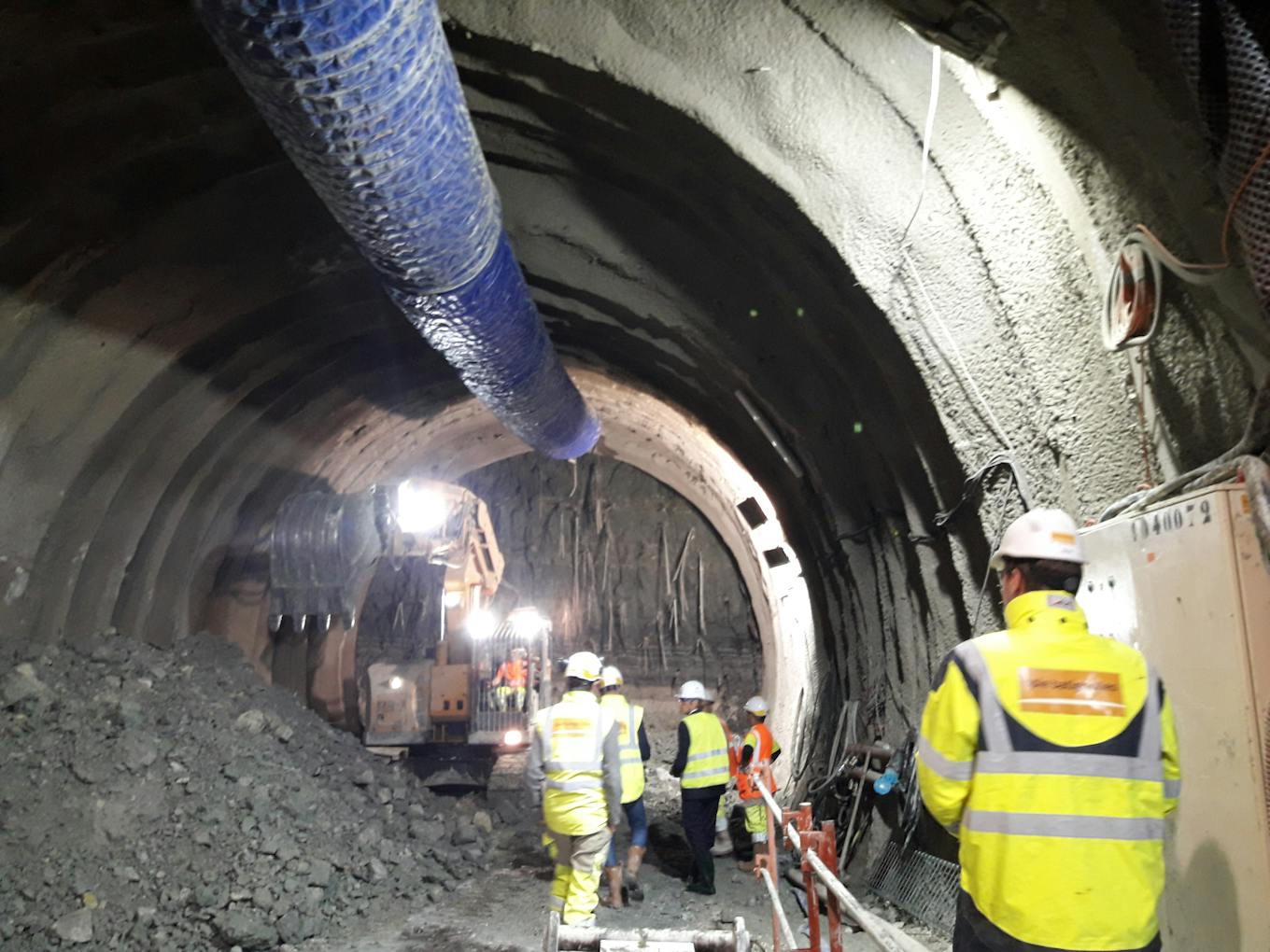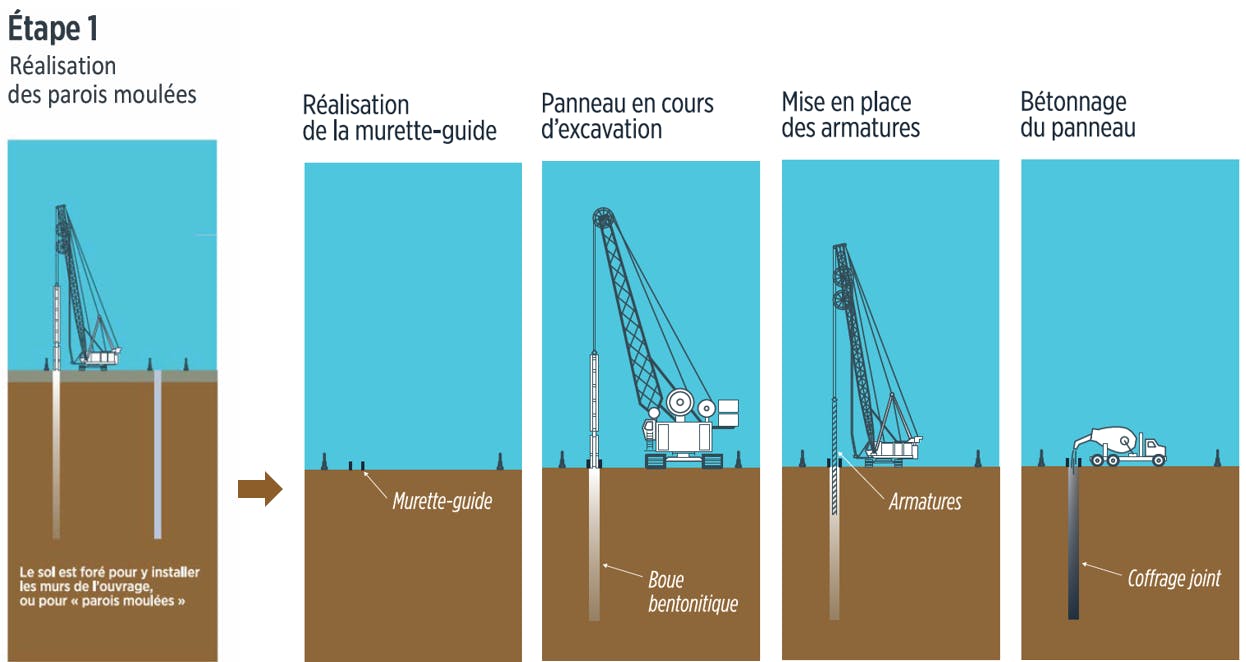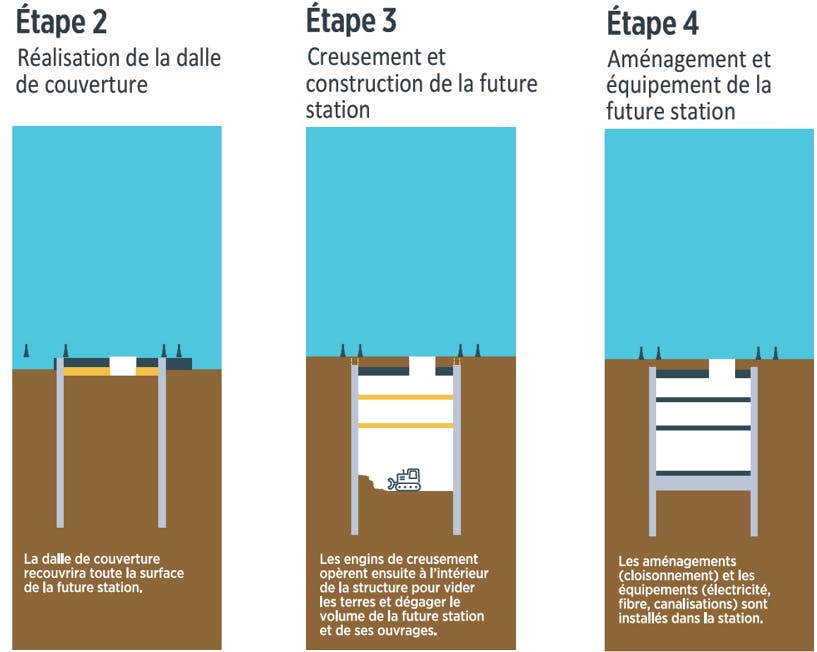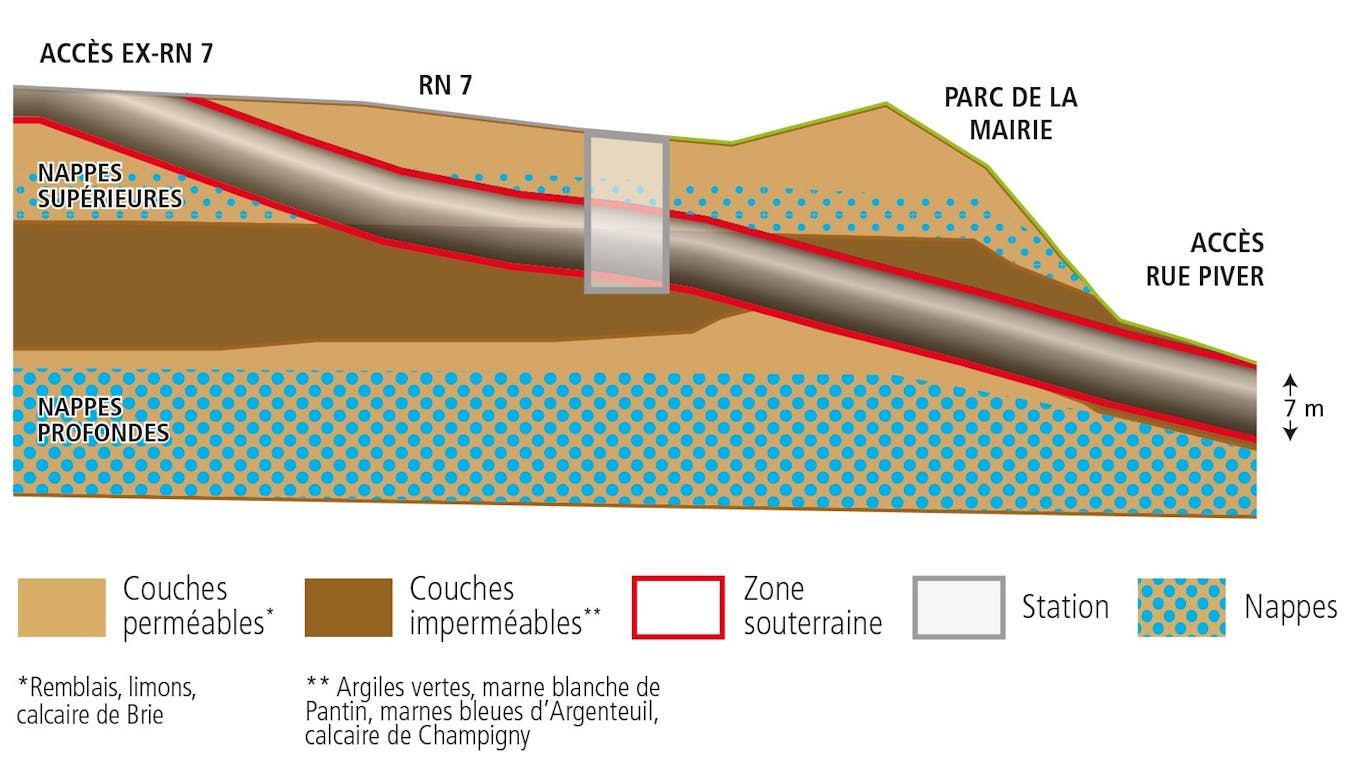Adapted working methods
Soil studies have been carried out to confirm the feasibility of an underground passage at the level of the park of the Juvisy-sur-Orge Town Hall and also to define suitable work methods.
These methods are adapted to the nature of the soil and also aim to reduce the construction site area in the park.
Tailor-made work techniques
Field investigations have made it possible to carry out detailed design studies. The aim is to take into account the lessons learned from hydrogeological investigations in order to better reduce the technical and environmental impacts of the extension.
Carried out over 900 metres, the work on the underground part of the route is the longest. They will be hired as a priority. Two work techniques are envisaged:
- Traditional method for the tunnel: the tunnel will be dug with conventional construction equipment such as the excavator.
- "Mole" method for the Observatory station and the trenches: the digging is carried out under the roof slab. This process avoids the nuisance of an open-air construction site.



Focus on soil studies
Field investigations were undertaken in 2018 along the former RN7 in order to study the composition of the soil and to confirm the feasibility of an underground passage at the level of the park of the Town Hall of Juvisy-sur-Orge. The studies concerned in particular the functioning of groundwater and springs. The objective is both to ensure the stability of the buildings located on either side of the underground section, and also to avoid any risk of flooding.

The field investigations were carried out along the EN7, in the Ducastel park and in the city centre of Juvisy-sur-Orge. In particular, they confirm the feasibility of a tunnel under the park. Several types of investigations have been carried out on the route of the extension:
- The geotechnical surveys have made it possible to better understand the composition of the soils. The structure of the underground section has been optimized, which will reduce the intervention time;
- The hydrogeological study defines the functioning of springs and groundwater. This study took into account the risks associated with the flood-prone nature of the cities of Athis-Mons and Juvisy-sur-Orge in compliance with the regulatory procedures relating to the Water Act1;
- The "cellars and foundations" survey, followed by the so-called "sensitivity" study, guarantees the stability of the buildings located near the underground area, during and after the work.
